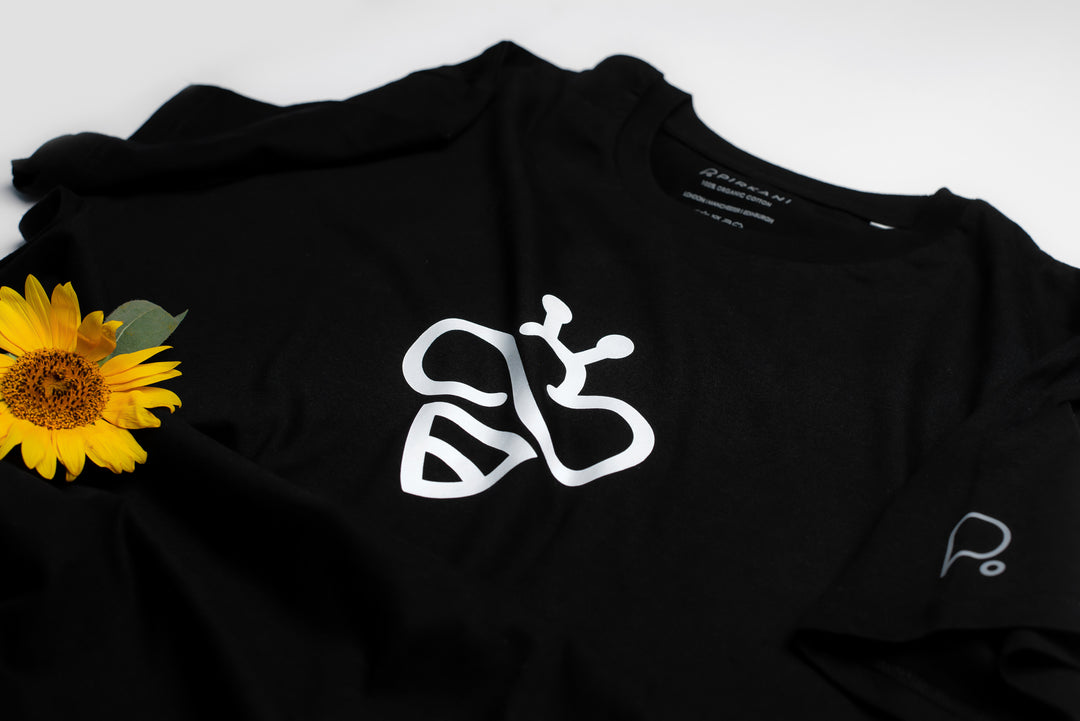Pirkani's Approach to Sustainable Fashion

Pirkani Apparel Ltd is a sustainable apparel start-up founded by Dr Moiz Pirkani to support the fragile eco-systems and tackle climate change. A green entrepreneur and recent graduate from Manchester, he leads us to leverage the power of green engineering, innovation in textile design and circular economy to provide sustainable fashion. He aims to build a future with recycling, reuse and green engineering as the substratum of fashion design, converging in an ever-lasting place. A personal cause to support the United Nations Sustainable Development Goals uses PIRKANI- its founder's surname to trade and reach out to the world.
At Pirkani, we focus on five core areas to ensure our products are sustainable, minimise harm to the environment and have a positive social impact. We use eco-friendly materials, ensure fair working conditions along the supply chain and are committed to integrating with the circular economy. We also encourage slow fashion and conscious consumption. We are dedicated to having an entire eco-system of sustainable apparel and a community that shares our vision and drives us to protect the planet earth.
Our foundational bedrock rises from thorough research and analysis on the fashion industry's contribution towards climate change. Statistical data and research have shown that the Fashion industry contributes approximately 10% of global carbon emissions, is the second-largest consumer of water worldwide, and produces 20% of global wastewater. Over 100 million rural households are employed in cotton production in developing countries, where fair trade practices are almost non-existent. Public awareness of the fashion industry's impact on the environment and society is increasing, and consumers are demanding a change in the way the fashion industry has been traditionally operating.
At Pirkani, we have joined hands with fashion designers, social scientists, environmentalists, textile engineers, data scientists, supply chain and operations managers, and digital media experts to define our approach to sustainable fashion.
1. Use Eco-friendly Materials
An estimated 1000 tonnes of plastic micro-particles fall as rain each year in protected and remote areas of nature, such as in the Grand Canyon and Joshua Tree National Park. Meanwhile, London has the highest atmospheric micro-plastic pollution levels than other major cities in China, France, and Germany. Micro-plastics are found in soils, terrestrial plant and animal life, in the ocean, as well as in the Earth's atmosphere. Because plastics are a persistent and lightweight material, they fragment into tiny pieces that the wind can easily carry. The plastic micro-particles are found to be caused by the breakdown of synthetic textiles. Fabrics such as nylon and polyester made up 92% of the pollution measured. These findings underline the importance of reducing pollution from synthetic fashion materials.
That's why we use 100% organic cotton or recycled natural fibres that are environmentally friendly and use no plastic or plastic derivates to ensure our clothes are not damaging for the environment through plastic micro-particle pollution. Organic cotton is also environmentally friendly. It uses much less water than traditionally grown cotton, produces fewer carbon emissions and avoids harmful pesticide and herbicide use, which pollutes the soil and water, and harms wildlife. We are also committed to using eco-friendly dyes and options for sustainable wet and dry finishing processes that will bring you trendy and chic clothing without traces of any harmful chemicals.
Our manufacturers use renewable energy and adopt practices to manage natural resources, like water usage and waste treatment before disposal. This way, we minimise 'embedded' energy and water usage during our garments' production and protect the natural environment from wastewater pollution.
We are fully aware of the high carbon emissions associated with energy-intensive wet processing in the fashion industry, where chemically stable fluoropolymers are used to waterproof many fashion items, including shoes and leather products. These polymers are sourced from the bodies of polar bears and seals found in remote Arctic locations and affect an entire eco-system of animal species. Many other chemicals used in garment manufacturing are also harmful to the environment and human health.
Pirkani's future collections will feature fully biodegradable garments with the natural colour of the fabric. Each garment will be wholly chemical-free and easily recycled or composted after use; while allowing the wearer to enjoy the beautiful colours that come naturally from nature. Many natural fibres such as hemp and linen come in different shades of natural colours, such as tan, white, cream and grey, and therefore do not require any chemical dying. Stay tuned as we continually strive to extend our range of sustainable fabrics.
2. Fair Working Conditions Along the Supply Chain
We ensure all of our workers receive fair and safe working conditions. In Pakistan and Turkey, where our garments are manufactured, each worker gets a stable and liveable monthly salary (compared to an unstable and low daily wage), health insurance, daily meals, paid holidays, and do not work uninterrupted extended periods. We are also committed to providing free education and training to the children of factory workers. We believe this will help break the cycle of poverty within local communities while investing in the next generation's future. Our corporate team works in collaboration with local governments to extend the reach of our socio-economic programs.
We understand that regional climate is essential for the overall health and well-being of the local community. That's why we plant saplings for every piece of apparel we produce to improve air quality and enhance the natural environment in the local areas where we manufacture our clothes. Our approach helps us to provide carbon-negative clothing to our customers and a meagre contribution towards tackling climate change. We are very proud of this as it supports both current and future generations to live a clean and healthy life.
3. Circular Economy
A circular economy emphasises a systematic approach to providing for the human population's needs through 'circular' ways like regeneration of natural eco-systems, recycling and reuse without continually producing new items from scratch or fresh raw materials.
Approximately 85% of all fashion items globally produced find their way to a landfill each year, the equivalent of one garbage truck full of clothes arriving each second. Meanwhile, less than 1% of the material produced for clothes are recycled into new clothing. Mountains equivalent of second-hand clothes is sold or dumped in Africa every year, which is not only a waste of the embodied natural resources, but it also smothers the local fashion market. Furthermore, the use of buttons, zippers, and other metal and synthetic accessories poses challenges for some fashion items' recyclability and extended life.
Some fabrics are known to be timeless- like leather, but they go against animal treatment. We collect discarded leather from factory and consumer dumps that would otherwise go to landfills and bring it back into circulation through some extraordinary jackets and other apparel. We are very committed to this as it will testify that nothing should be dumped.
We promote recycling of our clothes and work to establish transparent relations with our customers by providing information on where they can donate or recycle their clothes locally. In future, we also aim to introduce our own recycle and replace initiatives to close the loop on our supply chain and encourage our consumers to do the same.
As we strive for continuous improvement, we aim to collaborate with leading universities and innovation hubs to experiment and innovate new low-impact sustainable fabrics and materials. Materials such as biodegradable algae, plant fibres from waste streams (such as pineapple leaf fibre) and other recovered natural materials can play a role in closing the loop on other industries through fashion. Stay tuned for more details.
4. Conscious Consumption
There is growing public awareness of the environmental damage caused by excess production and consumption. Conscious consumption arises from awareness and concern about the health and well-being of people and the planet. Our approach is based on the understanding that small, deliberate actions can have a significant long-term impact; to benefit the environment and society.
One study found that conscious consumers were generally focused on three main aspects when making a purchase:
-
the quality and price of products
-
the possible harms to individuals and the Earth when evaluating a potential purchase
-
all aspects involved in the production and consumption of a product
We know that our customers want to help the environment and contribute to a positive impact on society through their purchases which is why we aim to be as transparent as we can about the:
-
longevity and quality of our products
-
how we minimise environmental harm and ensure a positive social impact
-
the initiatives we are developing to close the loop on natural resource use and move towards a zero-harm approach
-
work with manufacturers and partners that have necessary certifications and licenses like Global Organic Textile Standard (GOTS) and fair-trade
We hope you will join us in our journey to be conscious and transparent in our production and manufacturing processes. In this way, we can support conscious and ethical consumption options for our customers and, more broadly, society.
5. Slow Fashion
As the name suggests, slow fashion involves the production of fashion items that are generally designed to last more than one or two seasons. It also embraces the concept of "less is more". By playing a crucial role in reducing mass production and wasteful practices, slow fashion discourages impulsive and excessive buying. Slow fashion encourages people to be intentional about their purchases and clear about what they need.
We support slow fashion by producing high-quality clothes that last longer and help our customers buy less frequently. A general rule of thumb to extend the lifetime of clothes is to wash less, reducing water use and pollution over a garment's lifetime. Our quality standards ensure that our products remain in good condition for washes after washes. We also encourage our customers to consider natural drying instead of tumble drying. While some fabrics can be safely tumbled dried, it is preferable to hang or air dry, as this saves energy and involves minor wear and tear on the garment—each fashion item lasting longer.
Pirkani is committed to producing two collections each year—Summer and Fall. We hope this will inspire our customers to carefully consider their fashion choices and keep each item for many seasons and years to come.
We strive to grow and provide sustainable fashion to the world.






Leave a comment